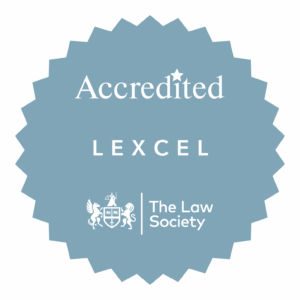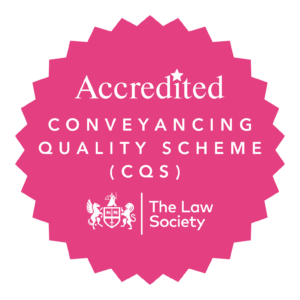Guide
Planning a reorganisation
Detailed documentation and good planning is essential when executing a reorganisation. It is important that advice is sought, and the documents properly record the transactions in order to demonstrate the steps taken, especially if the reorganisation is likely to be scrutinised by a regulatory authority or HMRC.
Reasons for a reorganisation/restructure
There are many reasons why a group of companies may choose to reorganise itself. These tend to fall under the following categories:
- Tax – many intra-group reorganisations take place specifically to secure tax
- Before an acquisition – when a group is planning to buy a new company or business, a pre-acquisition reorganisation can allow a company to form a new subsidiary within its group structure, which may be necessary for the proposed
- Before a sale – a pre-sale reorganisation is often undertaken when a group or company wishes to divest part, but not all, of its business (e.g. if a company proposes to sell one of its business divisions but that business is not already a standalone company).
- After an acquisition – to ensure that the acquired assets fit into the group in the most appropriate place (e.g. a target company or its business could be hived down into an existing operating subsidiary of a group, or intellectual property may be transferred to an intellectual property holding subsidiary and then licensed back to an operating company).
- Efficiency grounds – a reorganisation for operational or administrative reasons (e.g. to reduce the size of a group structure, or to provide a standalone subsidiary).
Shares or assets
Consideration should be given as to whether the reorganisation should be implemented by way of a transfer of shares or a transfer of the business. Each method has its own advantages and disadvantages:
- Liabilities – if shares in a company are purchased by a subsidiary or intra-group company, all its assets, liabilities and obligations are acquired. This includes any obligations or liabilities which a buyer may not know In contrast, if a business is purchased, only the assets and liabilities which the intra-group company agrees to acquire are transferred.
An asset purchase structure therefore gives a group more flexibility as to what assets and liabilities can be transferred and what are to be retained by the original company. This will allow a group to tailor the transaction to any future commercial scenario.
- Complexity – another consideration is that asset purchases tend to be slightly more complex than share
On a share purchase, shares can be transferred by means of a stock transfer form and / or a short share purchase agreement. The buyer acquires the company owning the business and runs it as a going concern. In contrast on an asset purchase, (except for employees who are automatically transferred to a buyer under the TUPE regulations) each asset and contract to be transferred will need to be transferred pursuant to the business purchase agreement. This will have timing and cost implications.
- Consents – on a share purchase, although the individual assets of the business will not be transferred, there may still be consent issues that must be addressed. These may be due to clauses in the company’s contracts known as ‘change of control provisions’. On an asset purchase, where there is a change of ownership of the assets themselves (in contrast to just the shares of the company) the consent of customers, suppliers, landlords and other parties may be required for the assignment or novation of existing contracts. Where it is impractical, or perhaps impossible, to obtain consent, a share purchase may be the only practical way forward.
Company law issues
It is vital to take legal advice before a group reorganisation. Intra-group transfers are often concluded at book value or even less with the amount left outstanding as an intra-group loan. It should be emphasised that if the resulting consideration is less than the asset’s market value, this approach exposes the group to a number of potential company law problems all of which carry serious penalties and / or consequences:
- director’s duties and group interest
- insolvency issues
- fraud on creditors
- returns of capital and distribution in kind
- financial assistance (if the transaction involves a public company).
The consequences of breaching any of these rules are serious and may include the transaction being set aside or the directors incurring personal liability. The most obvious way of avoiding these issues is to transfer the assets at market value for cash payable on completion. However in many group reorganisations this may be an unattractive option.
Documents required
Although intra-group transactions are less formal than arm’s length transactions it is nevertheless essential that they are properly documented:
For an asset purchase
- asset purchase agreement – this is the main document which transfers the business and assets to the buying
- specific assignments –
- Property transfers (to transfer any real property)
- Assignments and/or licenses of any intellectual property rights
- Assignments and/or novation agreements for contracts (e.g. customer, supplier, leasing contracts etc)
- ancillary documents – such as board minutes, notices to employees, HMRC consents and clearances, new banking documents, release from charges, relevant approvals from regulatory bodies
For a share purchase
- share purchase agreement – this is the main document which transfers the shares in the target company to the buying company.
- specific assignments – stock transfer
- ancillary documents – such as board minutes, HMRC consents and clearances, new banking documents, release from charges, relevant approvals from regulatory bodies
Other documents may be required such as a transitional services agreement (where the target is to continue to provide services to the selling company) or IPR licenses (if required).
Tax
As with any disposal of shares or assets, a number of taxes arise on transfers made in the course of a reorganisation, including stamp duty, stamp duty land tax (SDLT), stamp duty reserve tax (SDRT), value added tax (VAT), corporation tax and corporation tax on chargeable gains.
Relief from these taxes is generally available on transfers made between UK group companies. However, you should make sure that you see your accountant and get advice so as to ensure that the reorganisation is structured in a way that takes advantage of these reliefs.
Disclaimer: Please note that this fact sheet is for guidance only and is not intended to replace legal advice.










